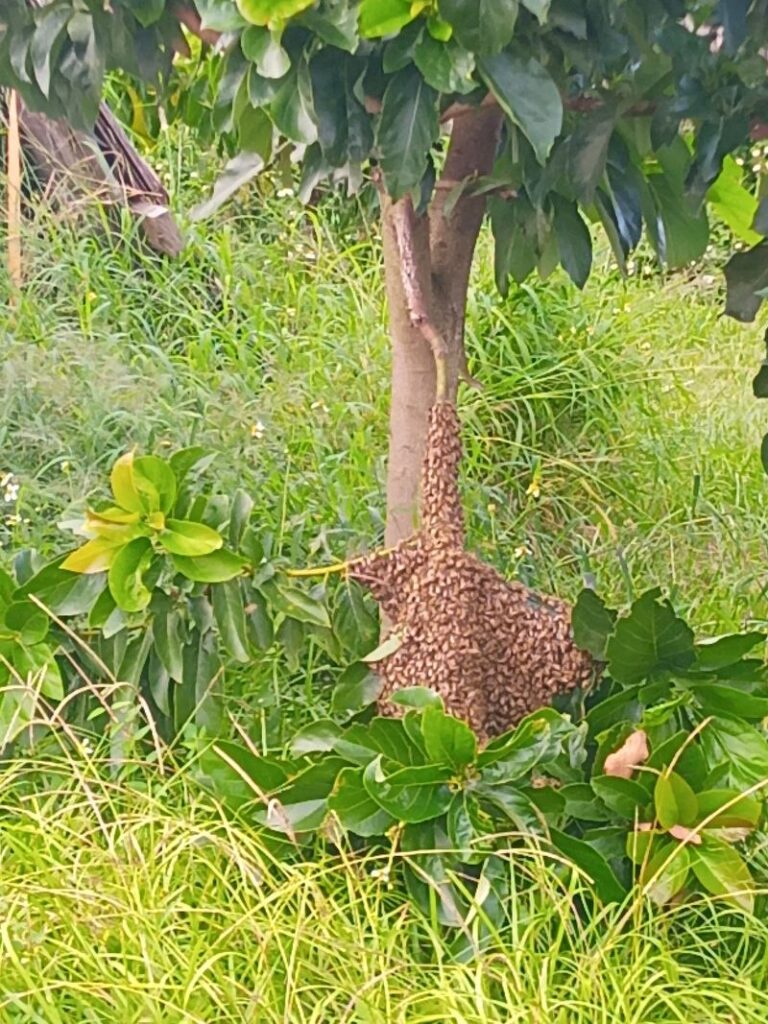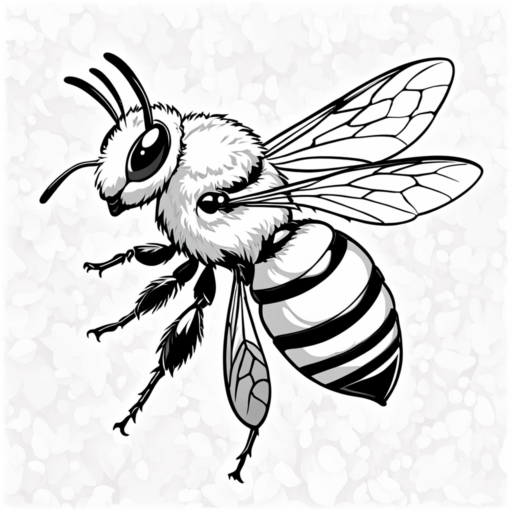Free Bees, Big Gains: Adding Swarms to Your Apiary
Catching a bee swarm is an exciting and cost-effective way to start a new hive, and Florida’s warm climate provides plenty of opportunities to do so. Whether you’re a seasoned beekeeper or just starting, capturing a bee swarm can be a rewarding experience—but it’s not without its challenges. Here’s what you need to know how to catch a bee swarm and how to house a bee swarm in Florida.

What is a bee swarm?
A bee swarm occurs when a colony divides, and a group of bees leaves with the queen to establish a new hive.
Why do bees swarm?
Swarming is a natural reproductive process for bee colonies, usually triggered by overcrowding, abundant resources, or a healthy queen.
When do bees typically swarm?
Swarming season usually occurs in spring and early summer, although it can vary based on location and climate.
Are swarms dangerous?
Bee swarms are generally not aggressive because the bees are focused on finding a new home and not defending their hive.
How long does a swarm stay in one place?
A swarm may stay temporarily, from a few hours to a few days, before relocating to a permanent home.
What Is a Bee Swarm?
A bee swarm occurs when a colony splits, typically because it has outgrown its current hive. The original queen leaves with a portion of the worker bees to find a new home, forming a temporary cluster on a tree branch, fence post, or another structure. These clusters are where beekeepers have the chance to capture the bees and provide them with a permanent home.
Why Catch a Swarm in Florida?
Year-Round Opportunities
Florida’s warm climate means that swarms can occur almost any time of year, though spring and early summer are the most active periods. Unlike in colder states, Florida’s extended growing season provides multiple chances to catch swarms.
Strong Local Genetics
Swarming is a natural way for bees to reproduce and expand their species. Florida swarms often come from strong, survivor colonies that are adapted to local conditions, including:
Heat and humidity.
Seasonal nectar flows like citrus and Brazilian pepper.
Local pests and predators.
Cost Savings
Catching a swarm is a low labor intensive and low cost way to catch free bees. Compared to purchasing a nuc or package, catching free bees from swarms is an appealing option for budget-conscious beekeepers.
Tools You Need to Catch a Swarm
To safely and effectively catch a swarm, you’ll need:
Protective Gear: A bee suit, veil, and gloves to protect yourself.
Swarm Box or Hive Box: A container to hold the swarm temporarily.
Pruning Tools: To cut branches if the swarm is out of reach.
Bee Brush or Feather: To gently move bees.
Ladder: For swarms located higher off the ground.
Sugar Water Spray: To calm the bees if needed.
How to Catch a Swarm
Locate the Swarm: Look for swarms clustered on tree branches, fences, or other surfaces. Local beekeeping groups or neighbors may notify you if they spot one.
Assess Accessibility: Ensure the swarm is in a safe and reachable location. Avoid swarms near power lines or in hazardous areas.
Prepare Your Equipment: Place your swarm box or hive box nearby and ensure your tools are ready.
Capture the Swarm:
Gently shake or brush the swarm into the box.
If the queen enters the box, the remaining bees will follow her pheromones.
Transport the Swarm: Secure the box and move it to your apiary site. Keep it cool and shaded during transport.
Install the Bees: Transfer the swarm to a permanent hive. Provide drawn comb or foundation frames to help them settle in.
Tips for Success in Florida
Use Bait Hives also known as Swarm Traps
Set up bait hives in your apiary or other strategic locations. Florida’s nectar-rich environment makes it an ideal place to attract swarms using bait such as:
Old brood comb.
Lemongrass oil as a lure.
- “Slum Glum”
Watch for Aggressive Behavior
Some Florida swarms may come from Africanized bee colonies, which can be more defensive. Observe the swarm’s temperament before attempting capture, and always prioritize safety. Wear protective equipment every time you are capturing swarms.
Timing Matters
Catching a swarm during cooler parts of the day, such as early morning or late evening, can make the process easier as the bees are less active.
Provide Immediate Resources
Once the swarm is housed, offer sugar syrup to help them build comb and establish their new hive, especially if local nectar sources are scarce.
Re-Queen Caught Swarms
If you are a residential beekeeper in Florida, in order to be in compliance with the residential beekeeper compliance agreement, all feral swarms must be re-Queened.
For more information, check out our article on the Florida Beekeeper Compliance Agreement.
The Best Bee is a Free-bee 🙂
Catching a swarm is a sustainable and rewarding way to start a hive in Florida. With the right tools, preparation, and knowledge of local conditions, you can successfully capture and house a swarm, adding a strong, natural colony to your apiary.
Have you ever caught a swarm in Florida? Share your tips, tricks, and stories in the comments below!
